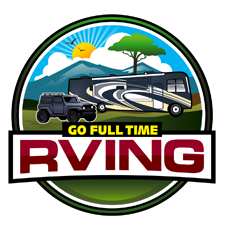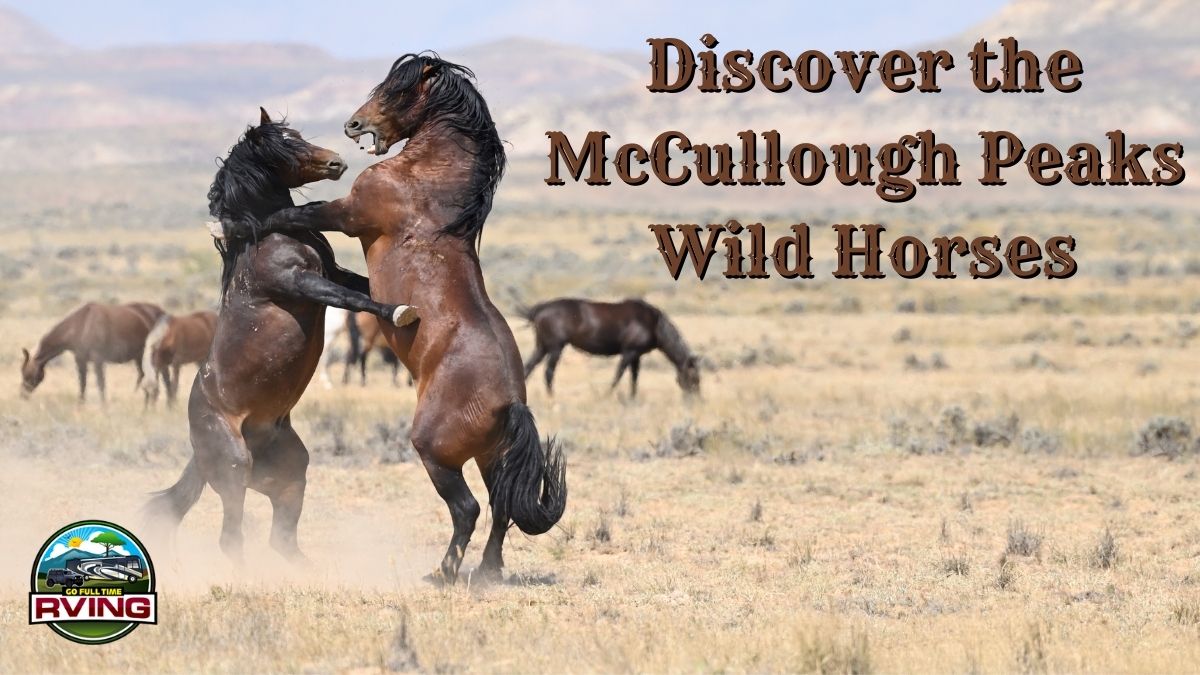Venture into the breathtaking expanse to the east of Cody, Wyoming and you’ll encounter the McCullough Peaks Wild Horses in a landscape that will leave you spellbound. But that’s not all that will catch your eye. This natural wonderland is home to a one-of-a-kind group of wild horses, who have roamed the region for decades, becoming a beloved sight for both locals and tourists.
Join us as we embark on an adventure to Discover the McCullough Peaks Wild Horses. In this journey, we’ll delve into the captivating history of these wild horses, examine their ecological impact on the region, uncover the dedicated conservation efforts being undertaken to preserve them, identify the best times to experience the beauty of the wild horses and the surrounding area, and highlight the plethora of exciting activities available for visitors to engage in.
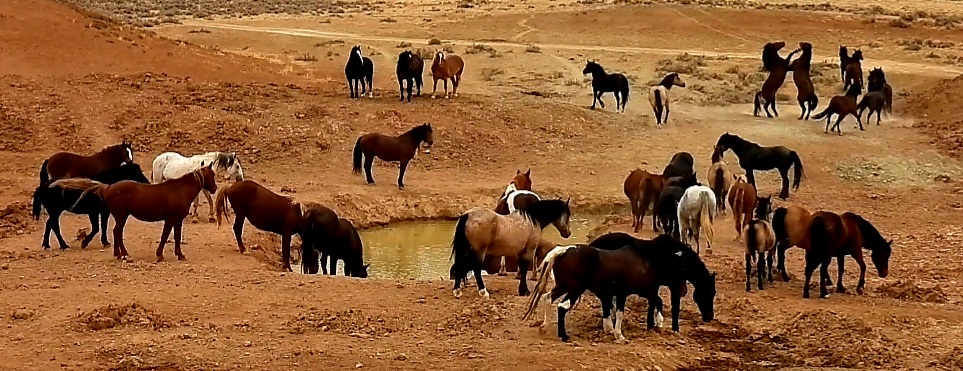
This post contains affiliate links. As a participant in Amazon Associates and various affiliate programs, we are compensated when qualifying purchases are made through our referral links at no additional cost to you. Full Disclosure
Diverse coat colors (bay, brown, black, sorrel, chestnut, white, buckskin, gray, palomino, and blue, red, and strawberry roans) and patterns such as piebald and skewbald are found in the McCullough Peaks wild horses. The animals tend to be moderate- to large-sized and habitat conditions are such that the horses are in very good condition.
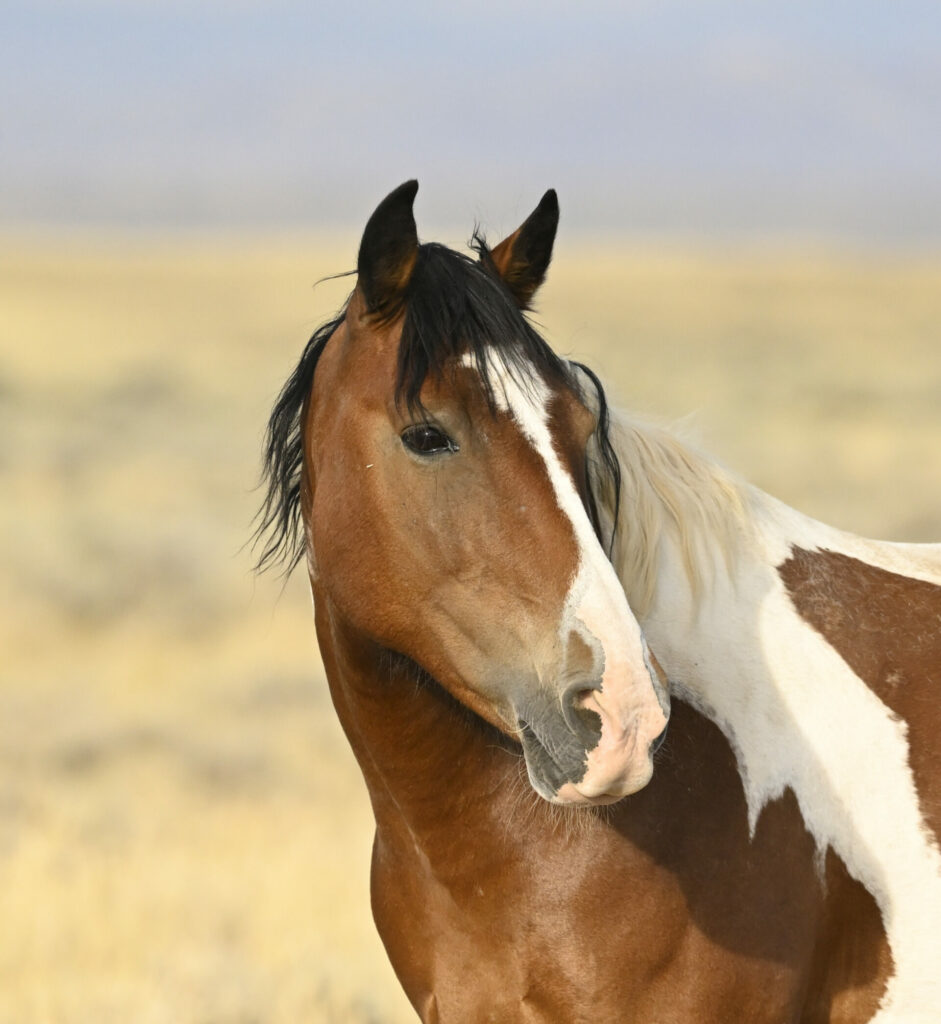
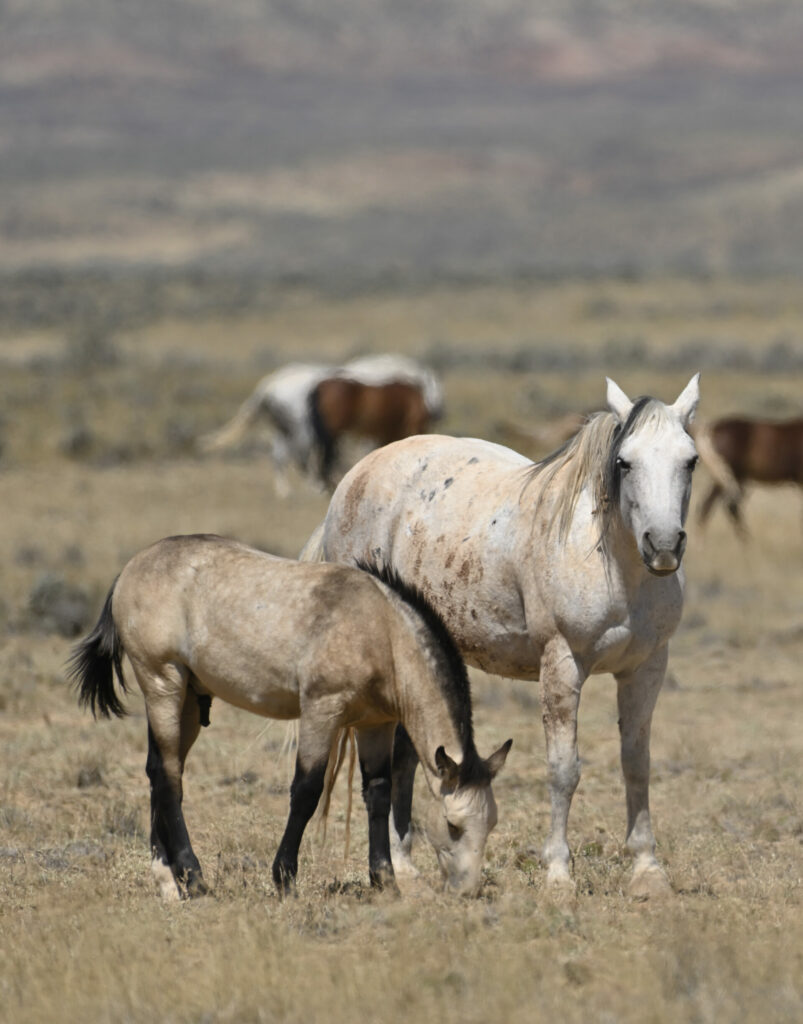
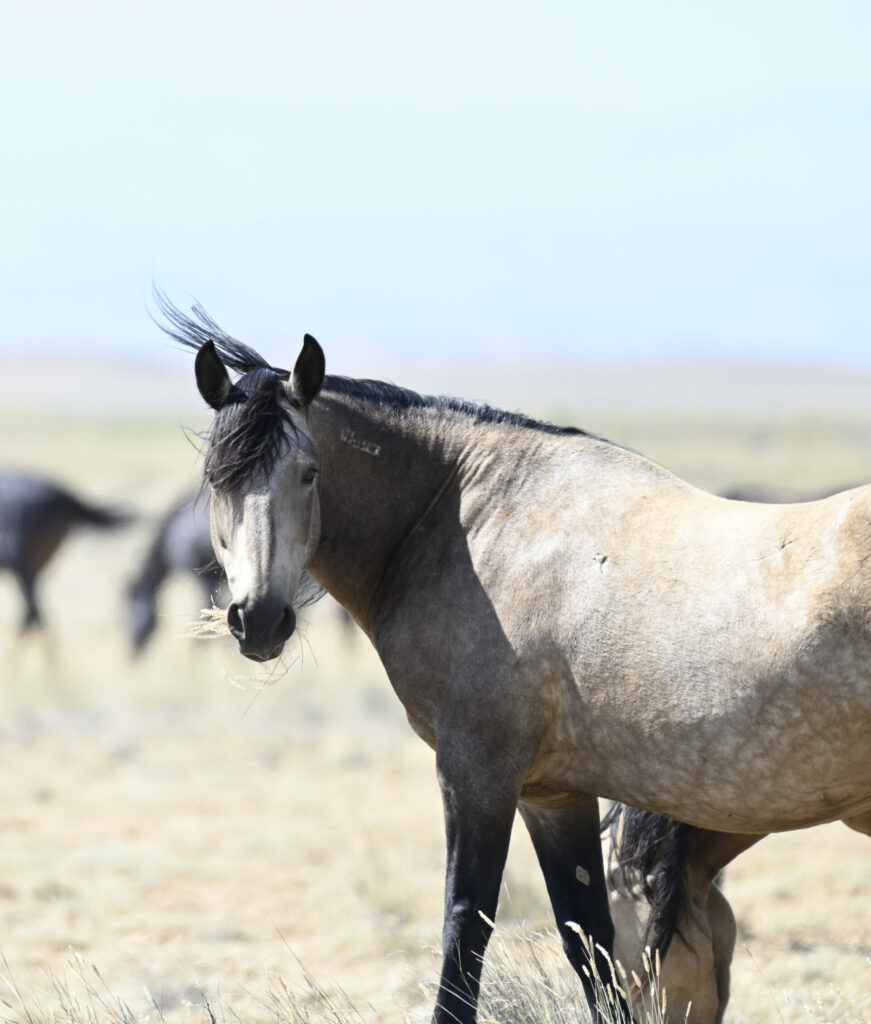
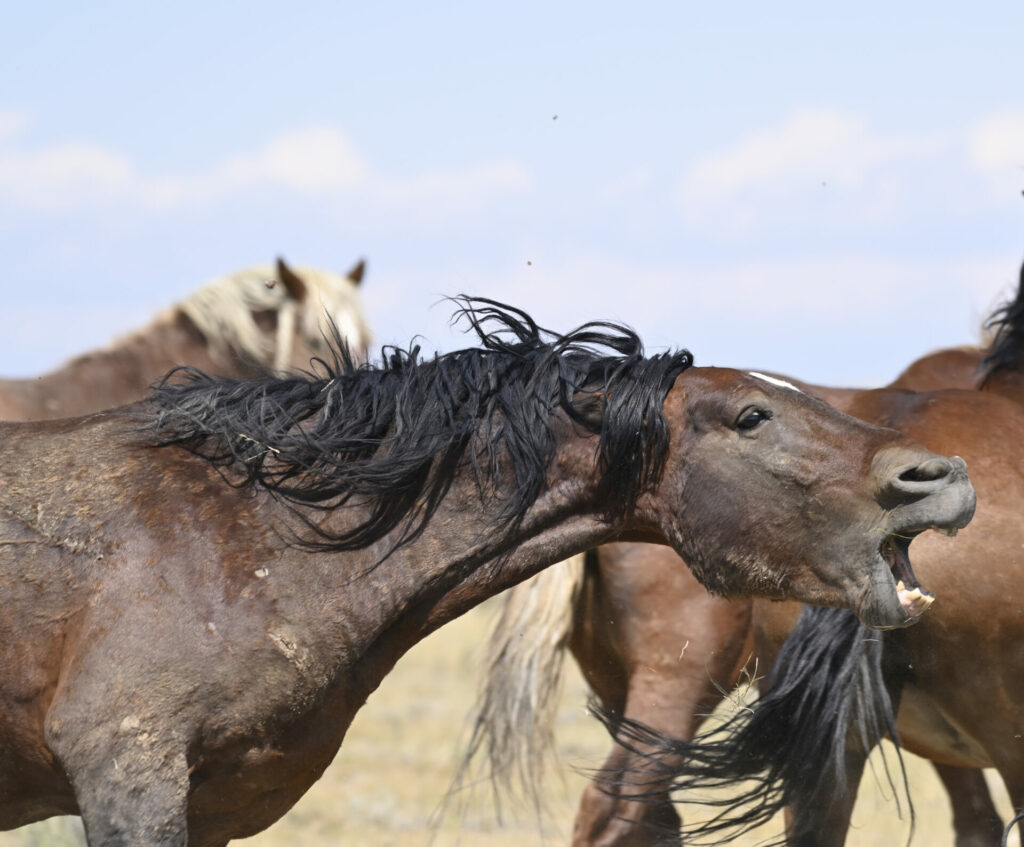
History of the McCullough Peaks Wild Horses
The history of wild horses in the United States is a long and complicated one. These magnificent creatures did not originate from North America; instead, they were introduced by Spanish explorers back in the 1500s. The wild horse population thrived and expanded over time, eventually spreading far and wide throughout the country. One such example is McCullough Peaks, where the untamed equines made their appearance in the 1940s and have since become an integral part of the region’s natural beauty.
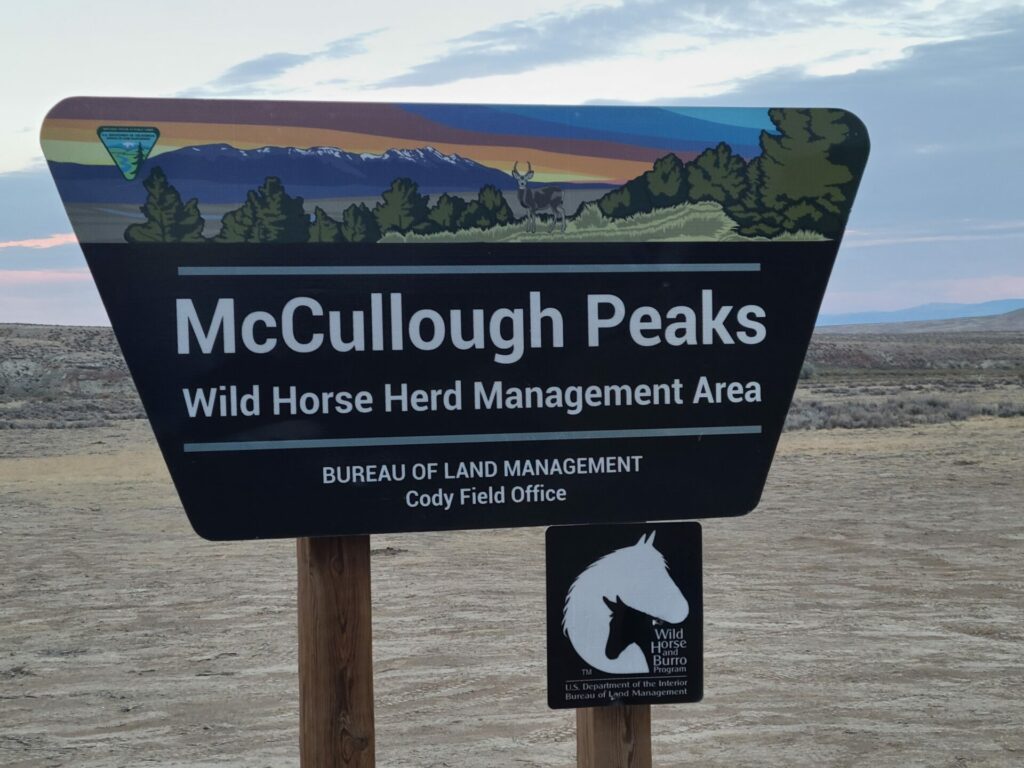
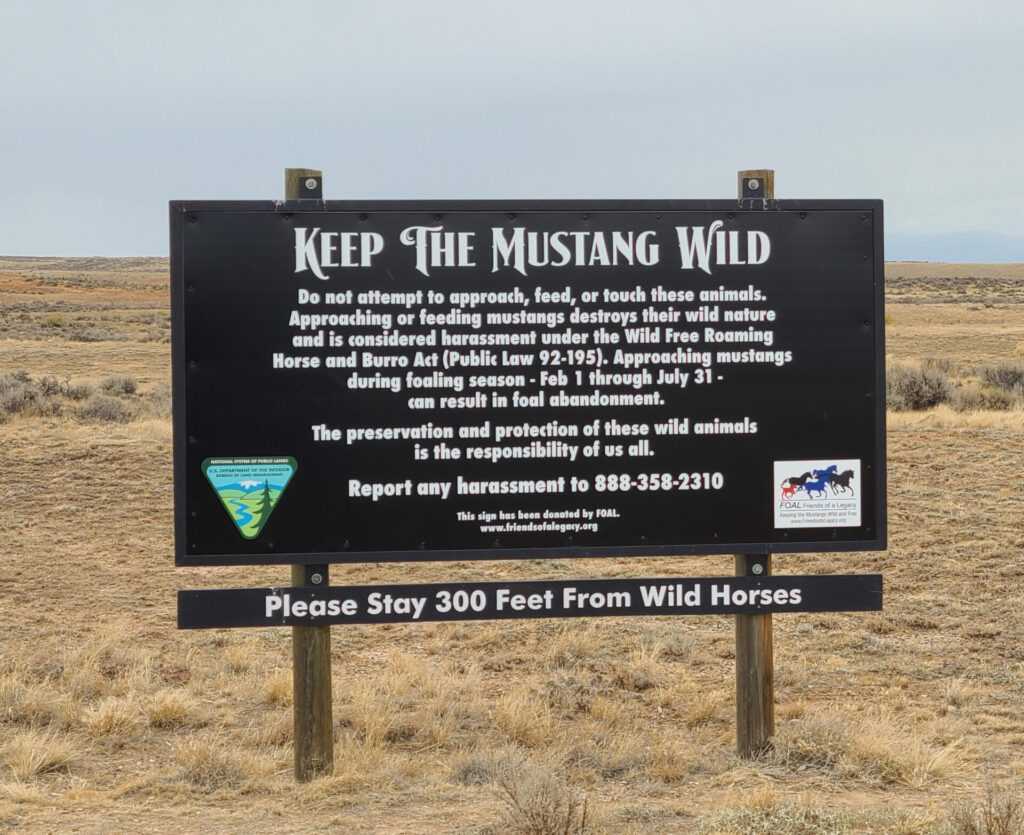
Location
From Cody, go east on Hwy 14-16-20 to mile marker 72 (about 18 miles). On the left, you will see a gate. Often the horses are in this area. You can enter here if you choose. If not, continue to near mile marker 74 where you will see a kiosk and the Whistle Creek road sign on your left. We’ve seen horses in both areas. It is best to drive the roads looking for horses in the distance. High-clearance vehicles are recommended.
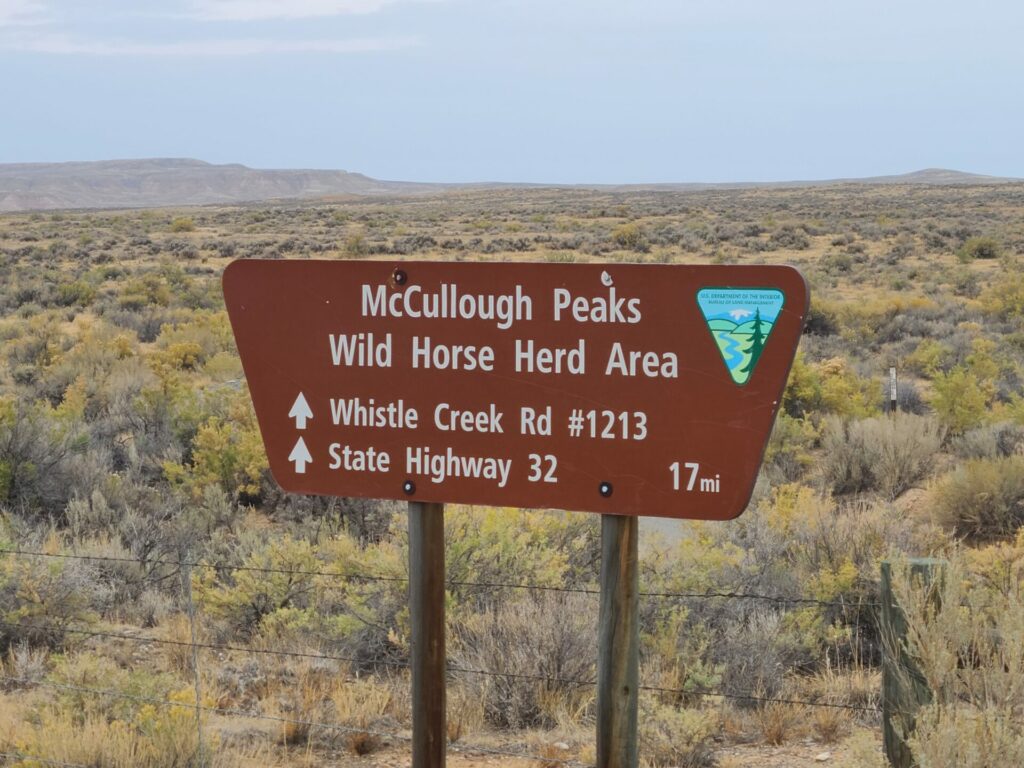

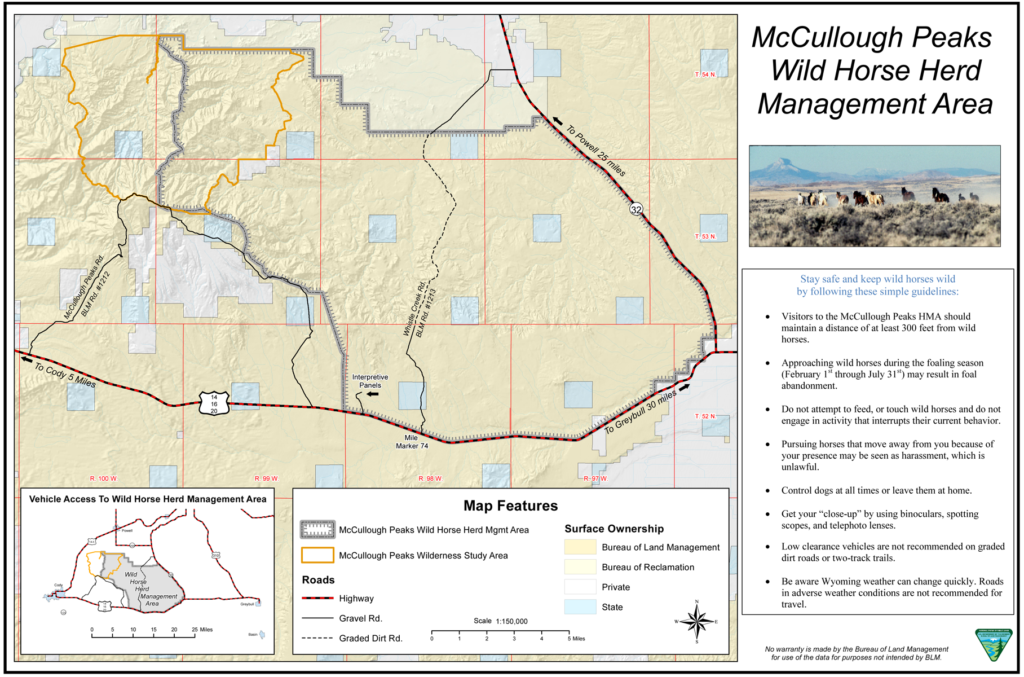
Best Places to Find the Wild Horses
Over the two years we spent in Yellowstone we made 4-5 trips over to Cody to see the wild horses. On our first trip, we took a guided tour just so we could learn where the horses hang out. For the rest of our trips, we would drive the roads of the McCullough Peaks Wild Horse Herd Management Area until we found the horses.
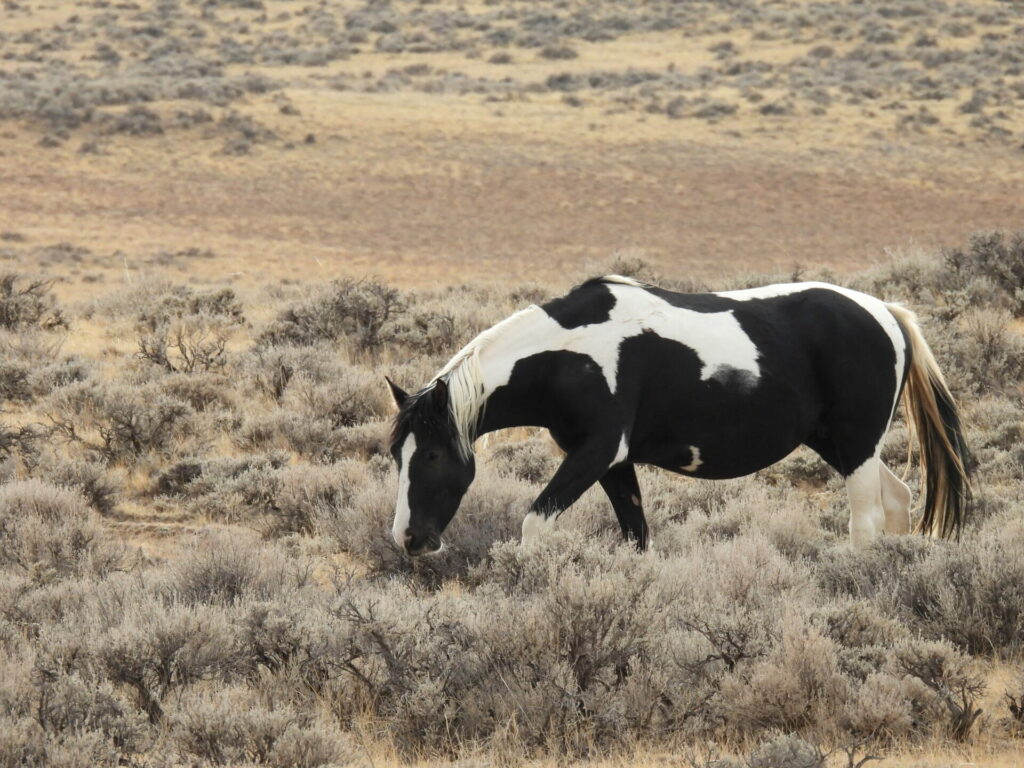
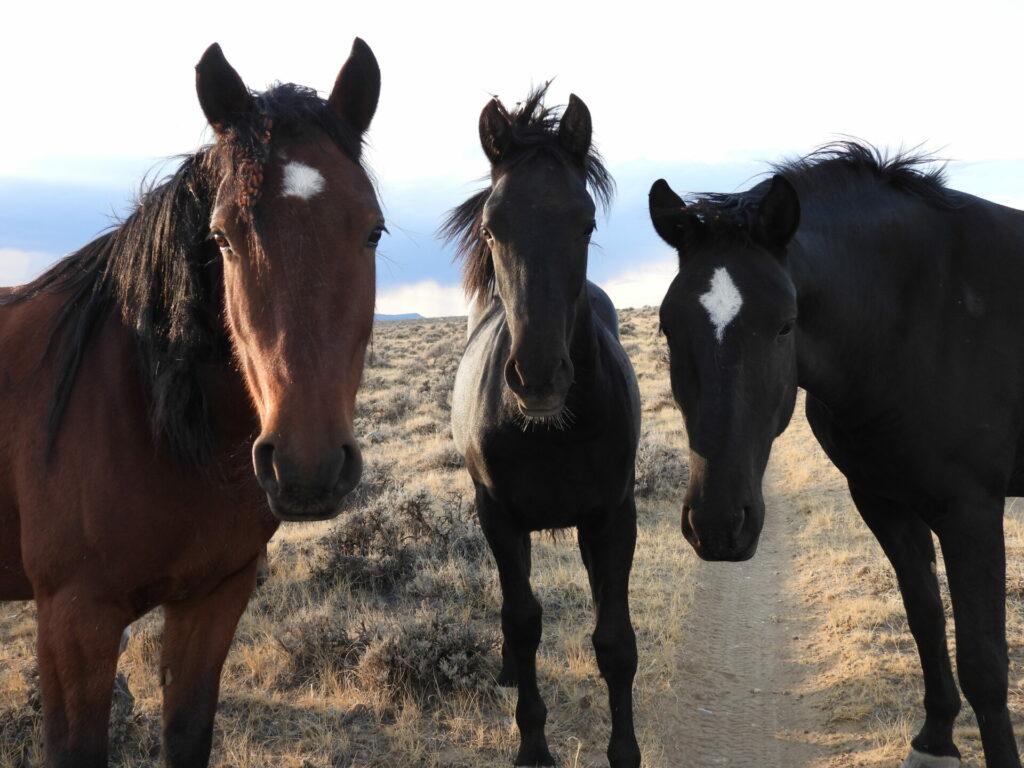
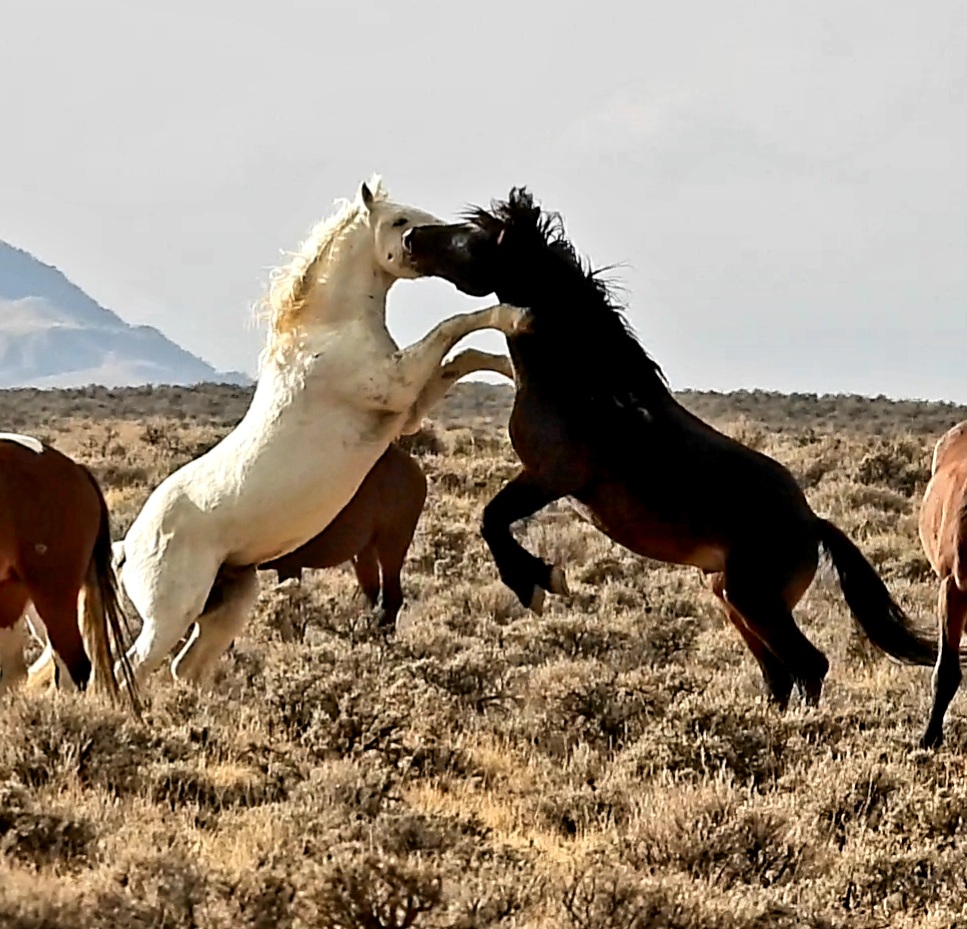
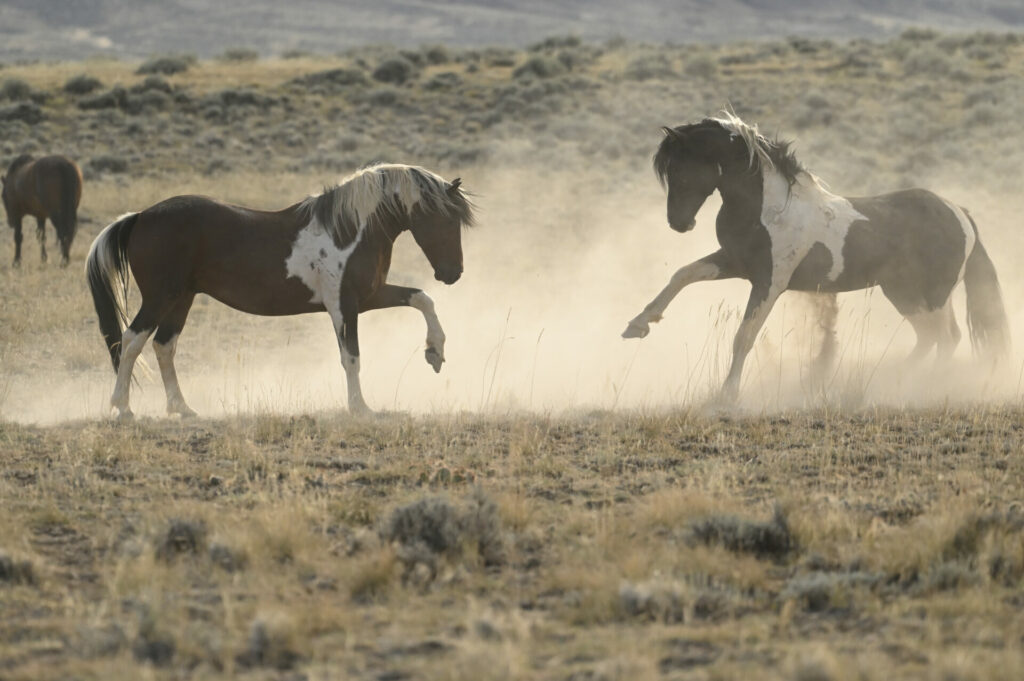
On every trip, we managed to find some horses. On some trips, we found more horses than others. We recommend having binoculars to help find the horses that may be further away. Be sure to take water and snacks and spend the day. If you love off-roading don’t pass this up. We saw wild horses, pronghorns, and beautiful views. All in all, we probably averaged seeing over 100 horses each trip.
Ecological Impact of Wild Horses
Wild horses, like any other creature, possess both advantageous and detrimental effects on the environment. On one hand, they serve as nature’s own caretakers by controlling invasive plant species and disseminating seeds, thereby adding to the area’s biodiversity. Nonetheless, their grazing habits can sometimes get out of hand, leading to overgrazing and vegetation trampling. This could trigger the onset of erosion and other detrimental impacts on the ecosystem. Thus, striking a balance between the benefits and drawbacks of wild horses remains a perpetual challenge for conservationists to overcome.
Conservation Efforts in McCullough Peaks
Over time, numerous endeavors have been taken to safeguard the wild horses residing in McCullough Peaks. The Bureau of Land Management (BLM) holds the responsibility for managing wild horses and has instituted various measures to ensure the horses’ welfare as well as the ecosystem’s preservation. A notable example is the implementation of a fertility control program, which endeavors to keep the population of horses at a healthy level while simultaneously mitigating any adverse impacts on the environment.
The BLM’s fertility control program in McCullough Peaks employs a contraceptive vaccine known as Porcine Zona Pellucida (PZP) to control the population growth of wild horses. By administering the vaccine to a percentage of the mare population, the BLM effectively reduces the overall population growth rate without having to resort to drastic measures like roundups and removals. This approach is useful as the vaccine works by preventing fertilization for about a year.
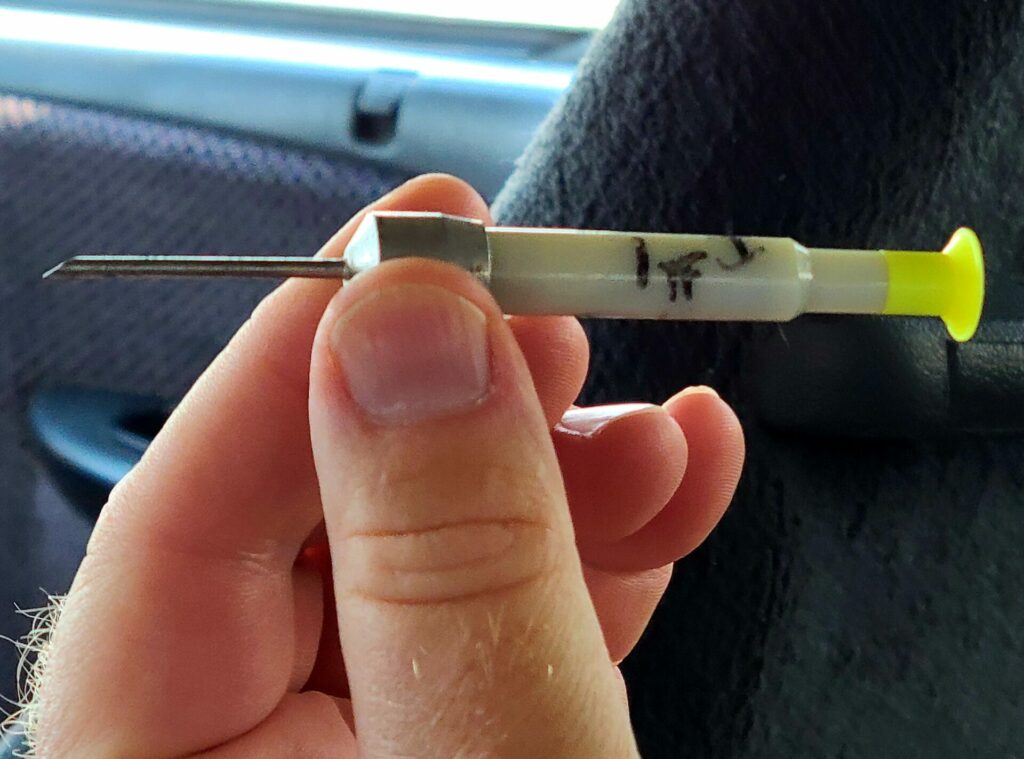
Population surveys conducted regularly by the BLM help monitor the wild horse population in McCullough Peaks, ensuring that it remains at sustainable levels. By utilizing predictive modeling, the BLM can also determine the number of horses that require PZP treatment every year.
Apart from the fertility control program, the BLM focuses on improving the health of the ecosystem in McCullough Peaks. They employ several vegetation management methods like prescribed burns and grazing allotments to manage the vegetation. The BLM works closely with local ranchers to establish cooperative agreements that support both wild horses and domestic livestock.
The conservation efforts in McCullough Peaks are aimed at striking a balance between safeguarding the wild horses and preserving the ecosystem on which they rely. The BLM’s fertility control program and other measures have been successful in maintaining a healthy population of wild horses while reducing the impact on the environment.
Best Times to Visit McCullough Peaks Wild Horses
We made our trips from July thru October and always saw plenty of Horses, Pronghorns, and other animals, but for the ultimate experience of McCullough Peaks, it’s best to visit during the mild weather of spring and fall when the wildlife is most active. Visitors are treated to witnessing the majestic wild horses thriving in their natural habitat alongside other fascinating species. However, keep in mind that winters and summers can be harsh, so visitors must plan ahead to ensure a comfortable trip.
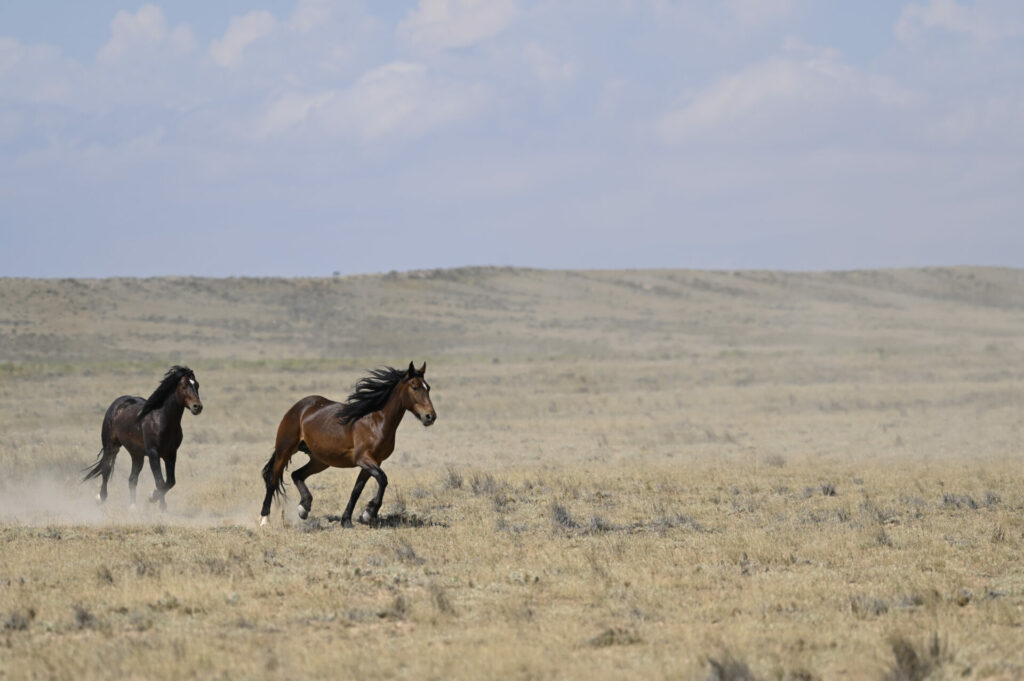
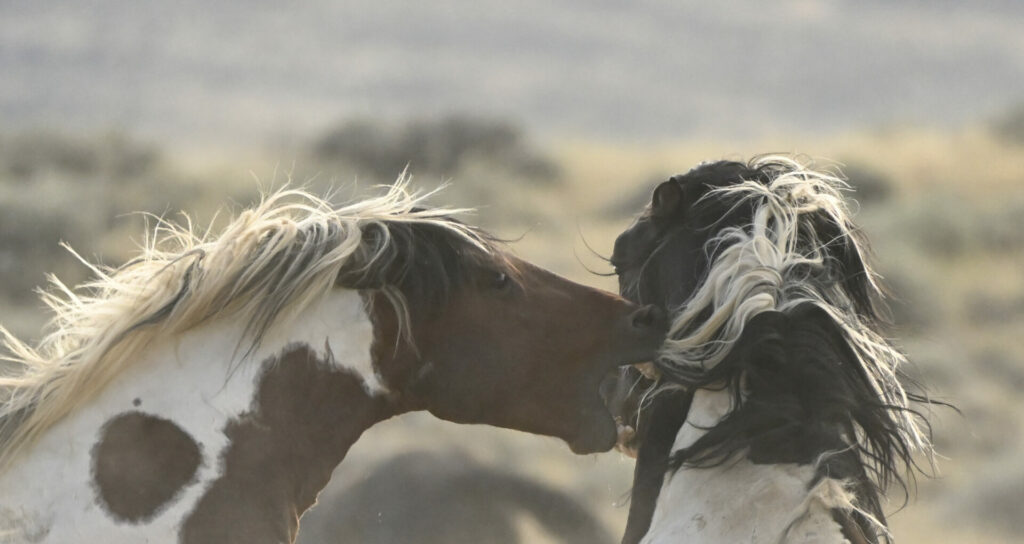

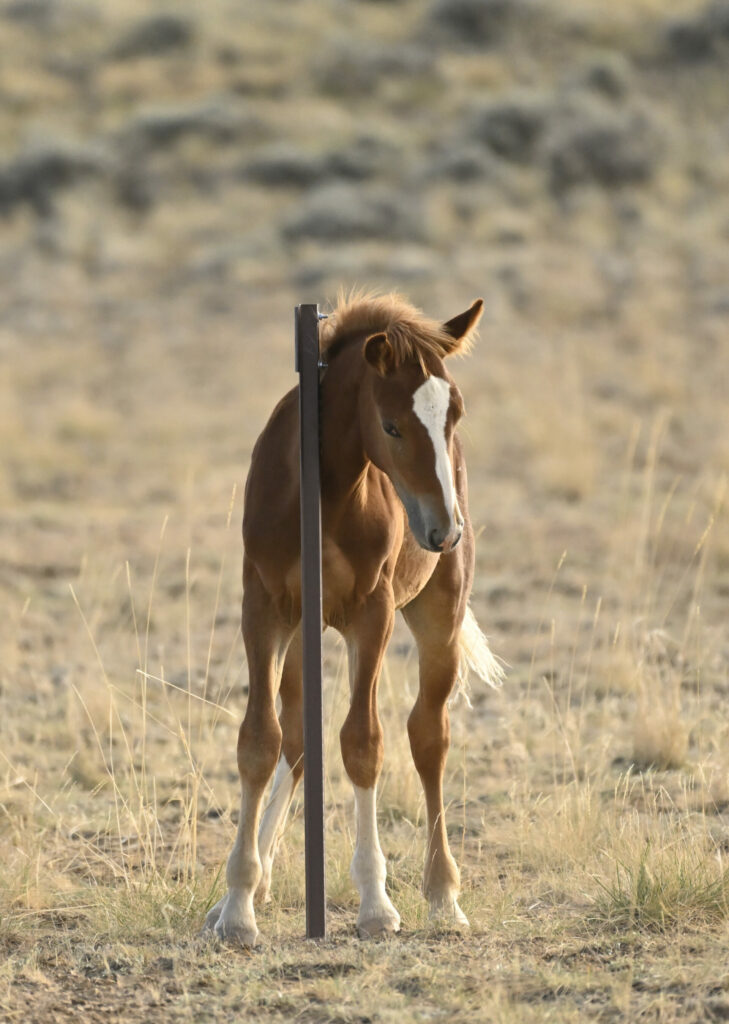
Activities to do in McCullough Peaks
McCullough Peaks is a haven for nature enthusiasts with a wealth of activities to suit all preferences. For adventure seekers, hiking is a popular choice as the trails offer breathtaking panoramic views of landscapes like the McCullough Peaks badlands, and colorful sandstone formations, which are known for their vibrant red, orange, and yellow hues. These formations were created over millions of years through a process of erosion and deposition, and are a popular destination for hikers, photographers, and nature enthusiasts.
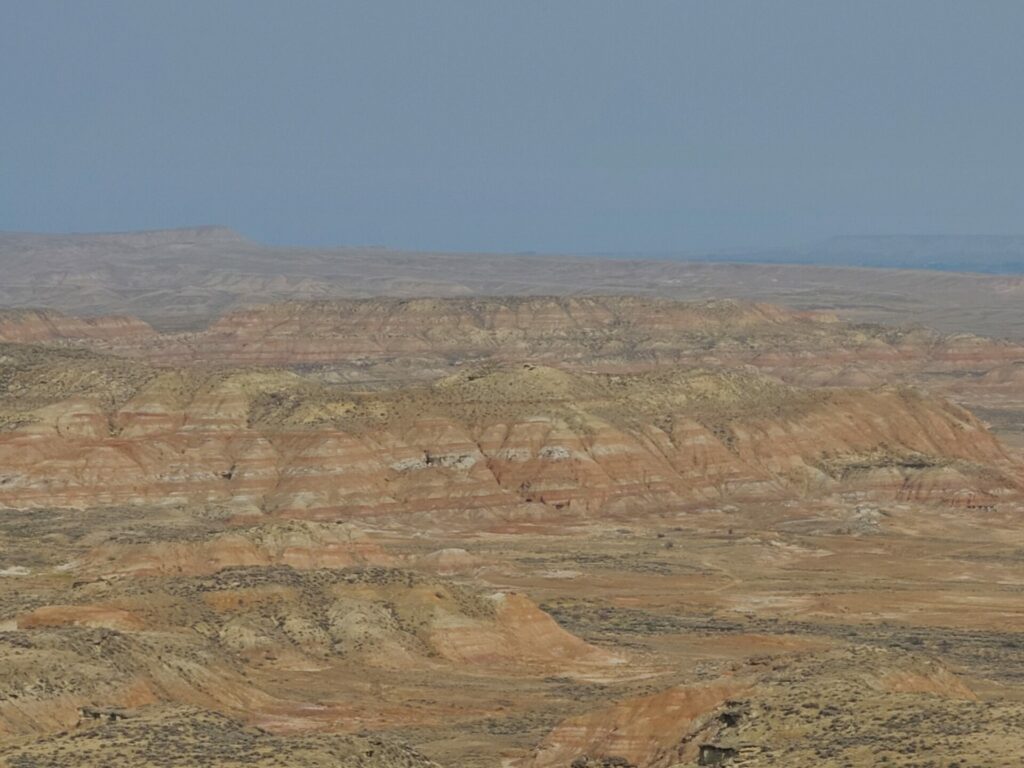
For wildlife enthusiasts, the region is home to a diverse range of fascinating species making wildlife viewing an absolute must-do activity. And for those who want to sleep under the stars and feel at one with nature, camping is a perfect choice. No matter what activities you choose, a trip to McCullough Peaks is an immersive journey into the heart of natural beauty.
Where to Stay
Cody was a separate trip for us during our summers in Yellowstone. While Workamping we had our campsites paid for us in West Yellowstone, so on our trips to Cody we ended up booking a cabin at Cody Cowboy Village. The rooms are nice and the staff is as friendly as you could hope for. The cabins are just down the road from the Cody Nightly Rodeo, a must-see stop while in town. We really enjoyed all of our stays there.
Common Questions About the Horses
Where are the McCullough Peaks wild horses?
The McCullough Peaks Wild Horse Herd Management Area (HMA) is located 12 to 27 miles east of Cody (70 miles east of Yellowstone National Park) and encompasses 109,814 acres of land, including the McCullough Peaks Wilderness Study Area. We’ve had our best luck entering the area off Hwy 14 at mile marker 74.
Can you see the wild horses without a tour?
Yes, you can see the wild horses without a tour. We would recommend having a high clearance or 4-wheel drive vehicle if you plan on going out to see the horses on your own. If you don’t then we would probably suggest taking a tour.
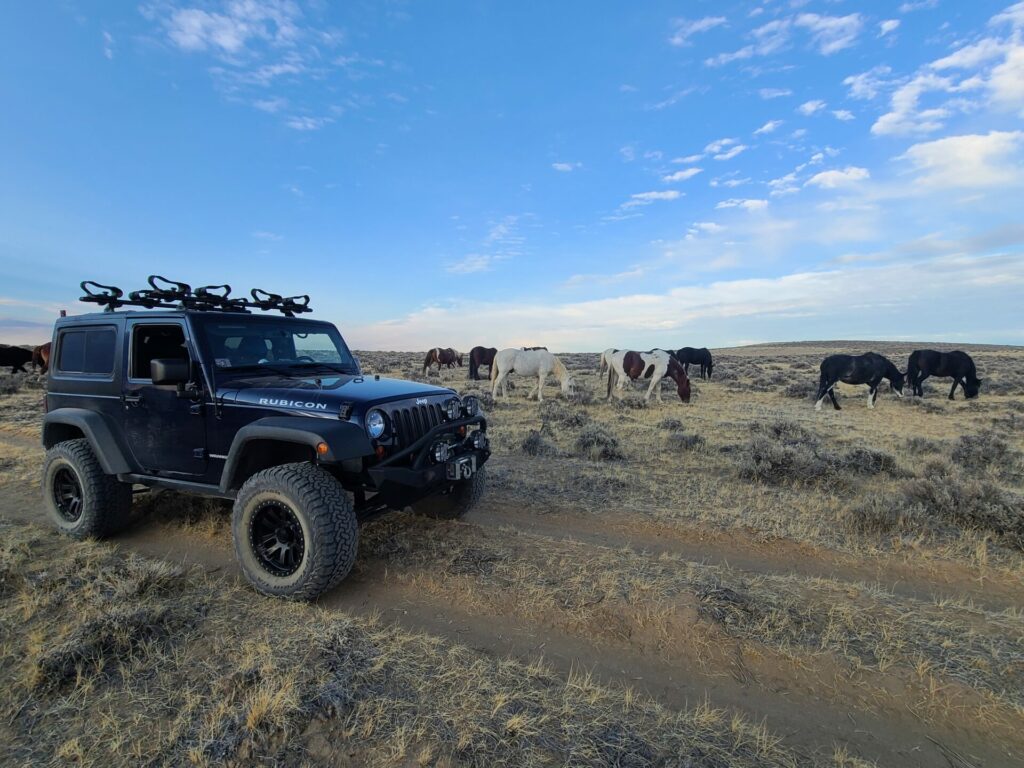
Which US state has the most wild horses?
Nevada is home to nearly half of the nation’s free-roaming horse population. Many of those horses are part of the Virginia Range herd, which occupies a region in the western part of the state. Our favorite place to see wild horses in Nevada was near Cold Creek just outside of Las Vegas.
Conclusion
McCullough Peaks is a uniquely exceptional destination, where wild horses play an essential role in the ecosystem. To truly appreciate the majesty and significance of these iconic animals, visitors can learn about their history, ecological impact, and conservation efforts. Knowing the best times to visit ensures an unforgettable experience in this natural paradise. Whether you are a passionate nature lover or just looking for a distinctive and awe-inspiring adventure, McCullough Peaks is an unmissable destination that will take your breath away.
What interesting places can you recommend? We’re always looking for neat out-of-the-way experiences to add to our list of places to visit. Thank you for reading our article. If you have any comments or questions we’d love to hear from you below.
If you’re looking to build your own home-based business like we have with this webpage, check out Wealthy Affiliate.
Wealthy Affiliate is an all-in-one platform that you can build your whole affiliate marketing business on. It combines training, software, and website hosting into one. This makes the whole process of starting an online business from scratch much easier, especially if you’re new to building a website.

